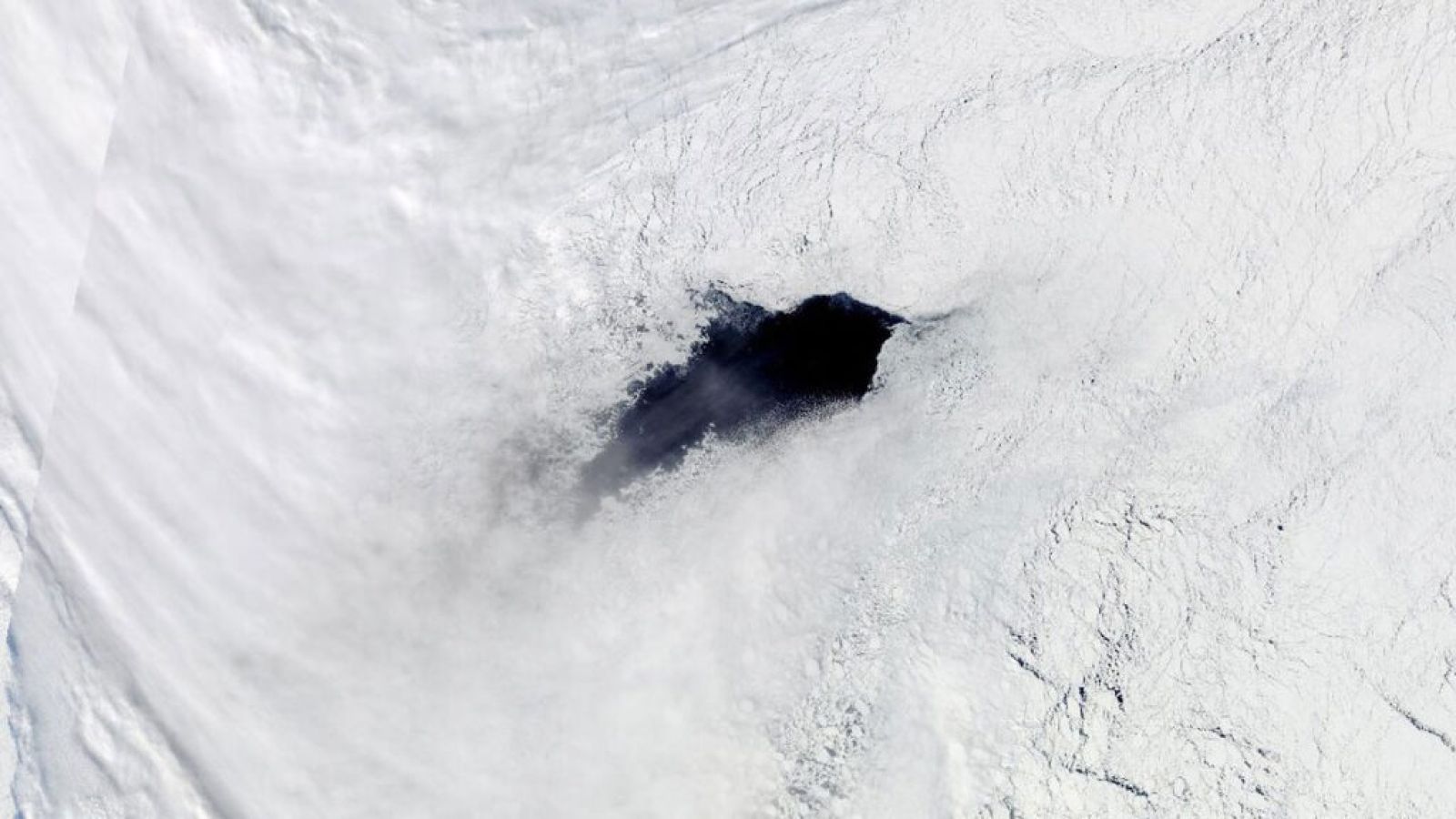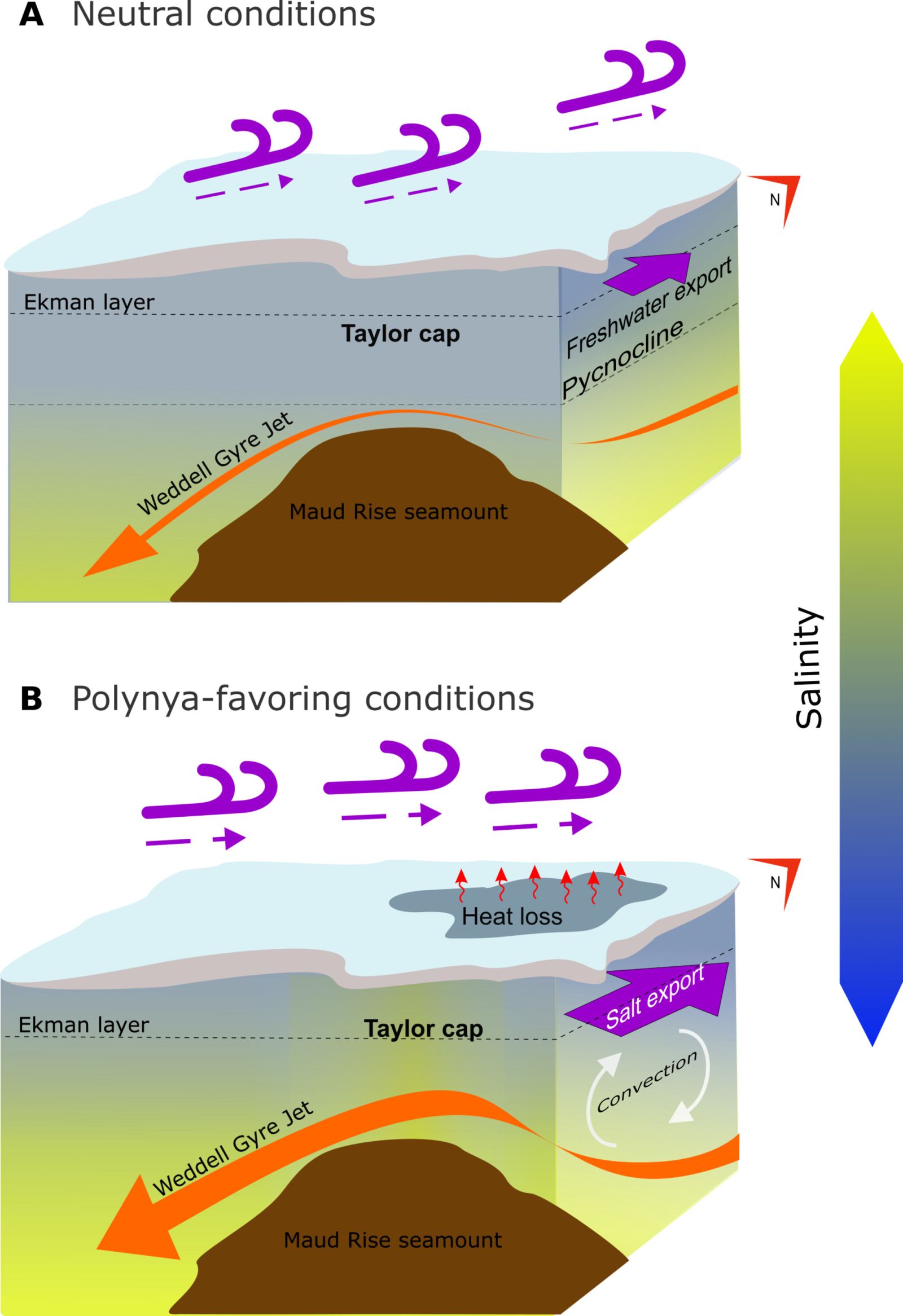Where does this massive "hole" in Antarctica the size of a country come from?
Follow us on Google News (click on ☆)

Aerial view of the Maud Rise polynya.
Credit: NASA Earth Observatory
In 2016 and 2017, a particularly spectacular event occurred, covering nearly 80,000 km². This provided a unique opportunity for scientists to better understand this phenomenon. They discovered that particular oceanic conditions were responsible for its formation.
The key to the mystery lies in the ocean currents near Maud Rise, an underwater mountain at the heart of the polynya. Researchers observed that during these years, the Weddell Gyre, a circular current in the Weddell Sea, was particularly strong. This facilitated the upwelling of warm, salty water to the surface, thus lowering the freezing point of the surrounding seawater.
This phenomenon is exacerbated by strong winds which, blowing over the area, create a spiraling motion around the underwater mountain. This “corkscrew” of salty water allows the polynya to remain open despite the surrounding low temperatures.

Credit: Claudia Ofelio
This discovery is not only significant for understanding the internal dynamics of Antarctica but also has broader implications. Indeed, polynyas influence the circulation of ocean currents and play a crucial role in the transport of heat towards the Antarctic continent. They also affect regional climates around the world.
These findings shed light on how climate changes, such as the intensification of winds in Antarctica, could increase the frequency of polynyas in the future. This emphasizes the importance of monitoring these phenomena to anticipate their effects on global climate.